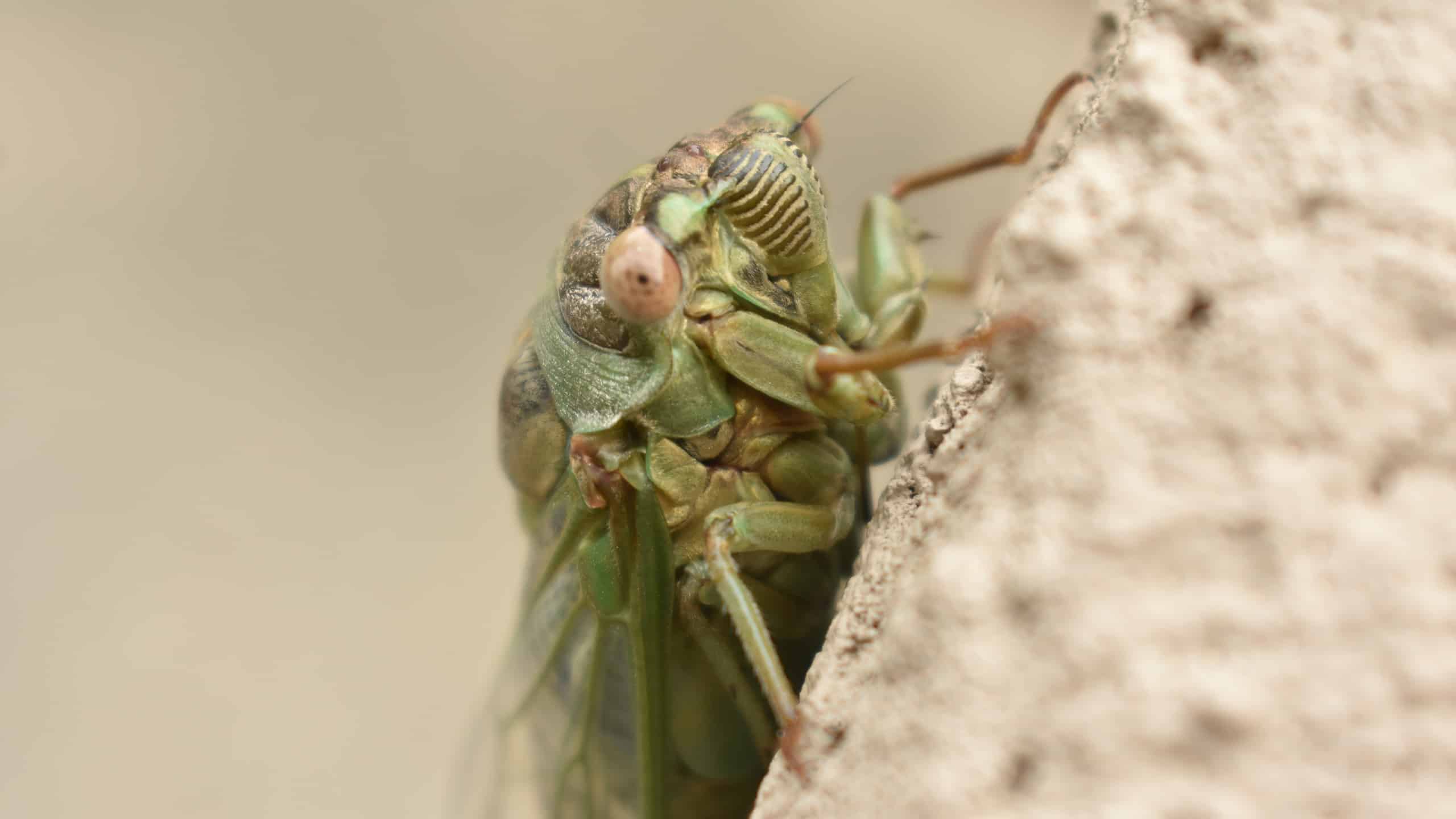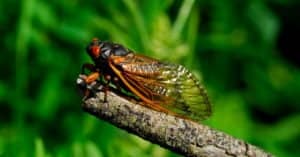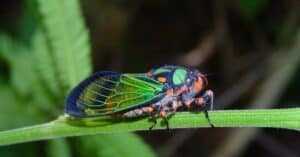One of the aspects we associate most with cicadas is their loud noise. It’s one of the most distinctive and recognizable of their features. These insects, which belong to the Cicadoidea superfamily within the Hemiptera order, are quite large and come out in some years. But what exactly is it about cicadas that causes them to make so much noise? And why do they do it?
Why Do Cicadas Make So Much Noise?
Cicadas make noise using their tymbal organ as a way to attract mates. Only the males make this sound. It has a distinctive clicking quality and can get quite loud. If you listen very closely, you may be able to pick up different types of sounds coming from male Cicadas. The most recognizable and the one that most people associate with this species is the clicking mating call. This is the male’s way of telling nearby females that he is ready to mate. They make different sounds to signal danger, to respond to a female who returns their affections, and when they are not interested in mating. Different species have slightly different variations on the pattern, helping to communicate to potential mates from within their species.
Male Cicadas use tymbals to make noise. This is a membranous part of their exoskeleton, located in their abdomen, that relaxes and contracts to make sounds. Their abdomens are large and hollow, amplifying the sound further. Female and male Cicadas have tympana, which function like our ears to absorb sounds.
If you’ve heard Cicadas making noise, it was almost certainly during the summer months. These insects mate during the summer and are most active when the temperatures are hotter. The males actually get louder as the temperature climbs. It can be hard to distinguish between the various calls of different species in different situations. However, scientists have developed ways to record and analyze Cicada songs.
Their noises can reach up to 90 decibels. This is very loud, especially for an insect. Male cicadas actually “turn off” their tympana while they call to prevent any damage to their listening abilities. Cicadas are not dangerous, although they can be annoying to listen to in large groups or for long periods of time. If you do have a Cicada right up to your ear as it calls, it can actually damage your hearing as well.
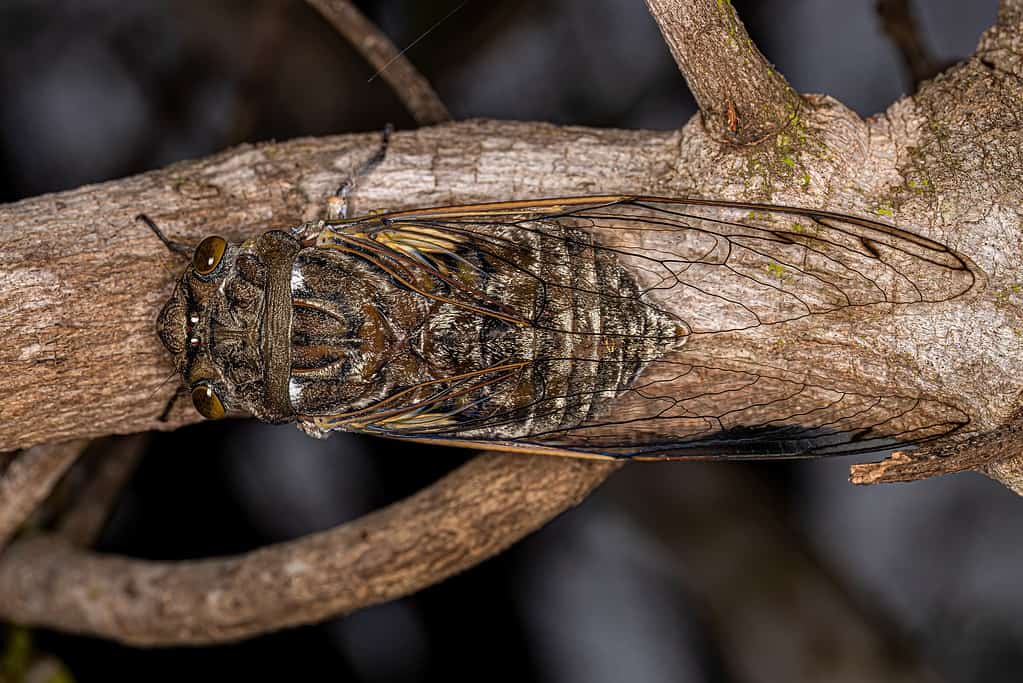
A giant cicada, or Quesada gigas, is typically 2-2.25 inches long.
©Vinicius R. Souza/Shutterstock.com
Insects as Food
Some cultures actually eat Cicadas. They taste similar to shrimp and are often prepared in similar ways. Like shrimp, they have an exoskeleton that they shed when they first emerge from the ground. Many people who eat cicadas wait for them to lose this “skin” or pull it off after they cook the cicadas. Some dishes also require removing the wings.
Cicadas are generally safe for pets to eat so you don’t need to worry about your dog getting curious during the summer months. Depending on the size of your dog, these insects may pose a choking hazard since they often get up to 2 inches long. If your dog is particularly excited and tries to eat a Cicada in one bite, you may need to keep a watchful eye.
Lifecycle of Cicadas
Cicadas in North America actually spend the majority of their lives burrowed underground. Female cicadas lay eggs above ground. When the young cicada hatch, however, they fall to the ground and immediately start to dig their way into the dirt. They dig until they are around 8 feet under the surface and stay there for around 17 years.
They begin to make their way back to the surface as adults. When they emerge, 17 years after they first hatched, cicadas are ready to begin mating. They only live above ground for around 5 or 6 weeks. This gives them just enough time to mate, lay eggs, and begin the life cycle again for a new generation of cicadas.
These insects are absolutely amazing creatures and the diversity across the different species is astounding. Some species emerge from the ground each summer, although those in North America only do so every 17 years. Seeing the brood of cicadas all emerging from the ground at the same time is certainly a sight worth recording and remembering.
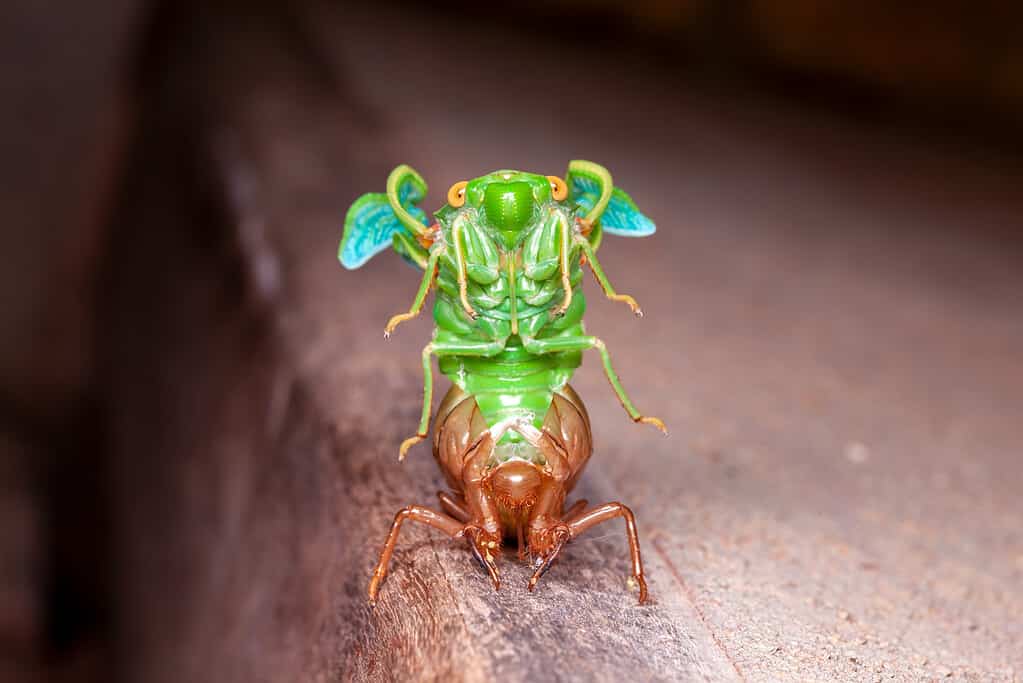
This cicada molts, emerging from its shell, and develops wings.
©Tacio Philip Sansonovski/Shutterstock.com
How Big Do These Insects Get?
Most cicada species grow up to 2 inches long. Some, such as the Empress Cicada, can get up to 7 inches long with a wingspan of around 8 inches. A cicada’s wings often extend beyond its body, giving it a very large appearance. Cicadas also shed when they first emerge from the ground. Many people find large amounts of cicada shells in one place.
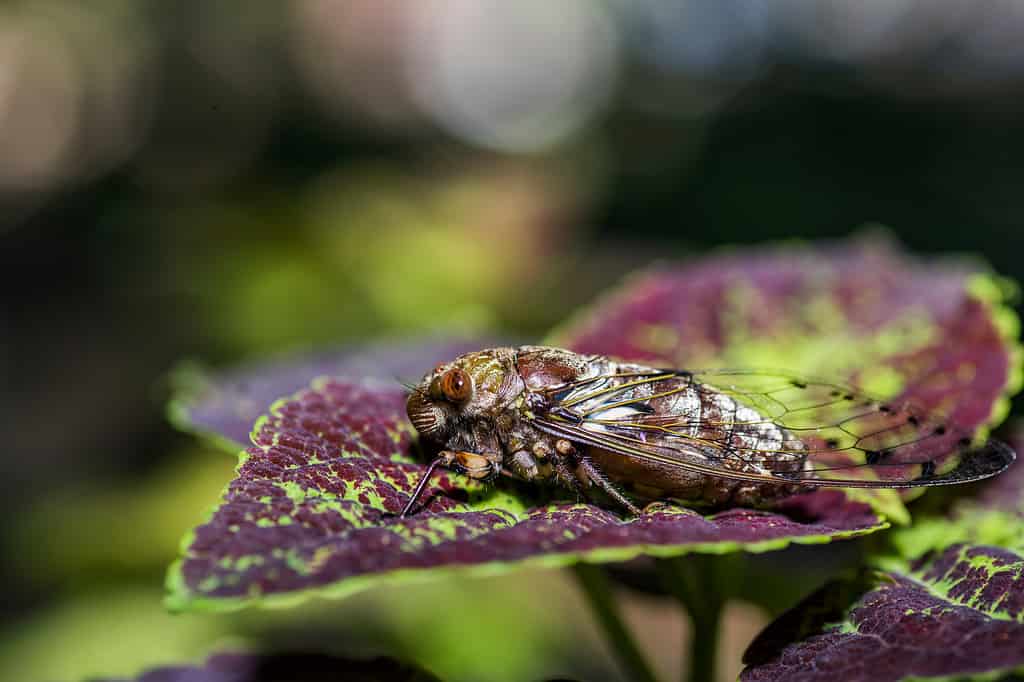
An empress cicada, or Megapomponia imperatoria, is the largest species of cicada.
©MEMBERHS/Shutterstock.com
Are Cicadas Around All the Time?
Technically, cicadas are around all the time but they aren’t on the surface, which is why most people don’t think about or notice them. Every 17 years, however, the brood resurfaces and makes its presence known. This happens in a short span of time and is hard to miss. Adult insects shed their skins, leaving them behind on the ground, in trees, and on plants. Their distinctive sounds also become the soundtrack to summer evenings.
One nice thing about the Cicada life cycle is that it is quite reliable. Scientists can reasonably predict when the brood will make its way to the surface based on when it hatched and started to burrow. It is important to note that cicadas may not all emerge in the same year around the entire region. Cicadas do resurface, mate, and lay eggs in the summer, which is why their sounds are associated with the summertime. This also happens to be the time when temperatures are warmer and people spend more time outside, making the presence of Cicadas even more noticeable.
How to Recognize a Cicada
Other than their sound, cicadas are also easy to spot based on their appearance. They have large wings and wide-set eyes on the front of their heads. The wings are often opaque, cloudy, or even glass-like. The specific look of the wings is one way to distinguish between species. Their wings are also textured in appearance. This comes from a waxy coating on the surface of their wings that repels water. It is actually made of tiny wax cones and spikes. Cicadas have been around since the Late Triassic period. The textured wings resulted in very interesting and easily identifiable fossilized imprints.
Thank you for reading! Have some feedback for us? Contact the AZ Animals editorial team.

